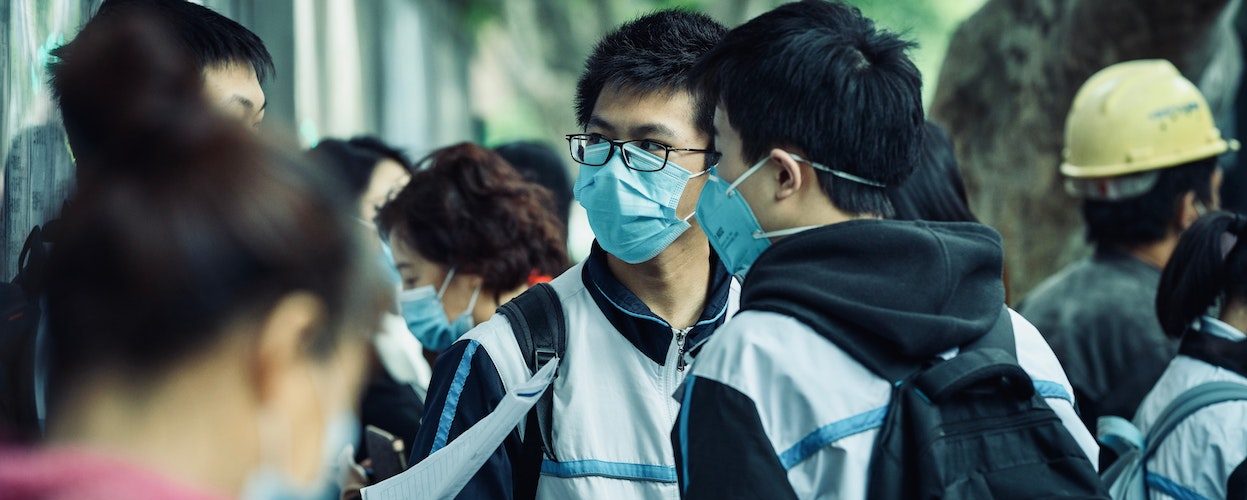Schools are inherently risky places. Hundreds of students and staff interact in spaces of all sizes, leading to many potential hazards. In regular circumstances, built-in safety measures keep the school running as safely and smoothly as possible. Janitorial staff clean cafeterias and restrooms on schedule, road crossing attendants keep traffic clear when the bell rings, and security professionals install and maintain alarm systems throughout campus.
But these aren’t regular times, and COVID-19 has brought a whole new level of risk to schools.
As the new academic year kicks off, schools are reopening in the fog of a global pandemic, making the situation all the more difficult. School administrators are turning to tools and solutions that will reduce the risks of reopening and foster maximum safety and minimum disruption.
One of these is a school reopening risk assessment.
An effective school reopening risk assessment includes
- Appointing an owner
- Identifying all parties and activities at risk
- Creating a comprehensive list of potential hazards
- Developing measures to counteract the risk
- Creating a task force to manage each countermeasure
- Setting periodic reviews
- Using a checklist
Risk assessment: What it is and how it helps
We can only manage risk if we understand it. While the term “risk assessment” may sound official and daunting, a risk assessment is simply a process to identify and understand what risks exist and to determine how to minimize or eliminate them.
The risks of COVID-19 are all too clear. According to current regulations, people who have been exposed to the virus must self-quarantine. At schools and educational institutions, masses of people are in close physical proximity at any given moment. If one teacher contracts the virus, dozens of students and staff who were in contact will need to go into quarantine, too. This can throw the entire school into disarray and cause massive disruptions to the learning schedule.
While the concept of risk assessment — identifying risks and implementing countermeasures — is quite simple, running a risk assessment for school reopening is anything but. There are many variables related to school reopening, and a risk assessment will need to touch on all of them.
How to reopen schools with minimal risk
Here’s an outline of the steps you can take to conduct an effective school reopening risk assessment and meet regulations related to COVID-19.
Appoint an owner
Any project will run more smoothly if one individual holds accountability for the process and manages it. Although the risk assessment will require input from other parties, it’s wise to appoint an owner. This person will be the central point of contact for conducting the assessment and finalizing the report.
Identify all parties and activities at risk
Develop a comprehensive list of all the people, groups, activities, and operations involved with school reopening. Consult the schedule for each grade level or class, and use it to map out the various areas that need a risk assessment. For example, if attendance at school is staggered according to grade levels, then the risks on Monday will look different from the risks on Tuesday.
You may decide to divide the risk assessment according to days, grade levels, or another parameter. There are no set rules — you can adapt the risk assessment to meet the circumstances on the ground at your campus.
Create a comprehensive list of potential hazards
Now that you’ve defined the different groups and activities, it’s time to begin outlining the potential risks associated with each.
For example, an item on the risk assessment could be “a student reports feeling unwell during class.” There are several hazards that come with this scenario. The first is the risk of contagion among those the student has been in contact with during the day. The second is that the student will continue to come into contact with more people unless school personnel separate them from their peers immediately.
Another example of risk is when groups of students come into contact with each other, such as when school buses arrive in the morning. The risk assessment identifies the potential instances when groups may come into contact during the day and calculates how much of a hazard these instances pose in every case.
Develop measures to counteract the risk
Once you complete the list of potential hazards, you can begin devising countermeasures to combat each one.
If a student reports feeling unwell at school, the measures can include designating a quarantine room where you can immediately separate the student from others while they wait for a parent to arrive to take them home. One staff member will be assigned to the quarantine room, and they will have full-body personal protective equipment (PPE) to prevent direct contact with the student.
These measures reduce the risk of contact as much as possible and as soon as the situation arises.
Create a task force to manage each countermeasure
Reducing risk takes many resources — extra equipment, staff, and coordination. Once you identify risks and define countermeasures, it’s a good idea to create a task force to implement them.
The task force is responsible for putting the countermeasures in place, ordering and setting up the necessary equipment, and ensuring someone is assigned to every role and that everyone understands what they must do. If a specific countermeasure is complex and requires extra resources, you can even assign a special task force to handle it separately.
School reopening is always a team effort, but in the time of COVID, it’s even more important to work together. All staff must be on board to make sure your school reduces the risks.
Set periodic reviews
There is no such thing as a static risk. New risks are always going to arise as the situation changes. Your school must revisit your reopening risk assessment on a regular basis in order to keep up to date.
For example, if two teachers have to self-quarantine, there’s a certain risk involved. What happens if it’s six teachers? How does that affect the action plan? How can your school manage the risk of further contagion? You can handle issues such as these in real time during the periodic review process.
Use a checklist
School reopening risk assessments involve many moving parts, so it’s vital to use a checklist to stay on track. A simple checklist in Word or Excel is enough to do the job. If task force teams are involved, you can use a document sharing program, such as Google Docs, so everyone can access the risk assessment in real time.
A school reopening risk assessment requires input from numerous staff members — and even from students and parents. For instance, gym teachers have the best insights into the risks during physical education classes, and the cafeteria manager knows exactly how the team prepares and serves lunch.
An efficient way to gather all the necessary information for the risk assessment is with a digital risk assessment questionnaire. You can adapt the questionnaire to focus on what’s important for each respondent and their area of expertise.
Risk is everywhere, including at school
Risk assessment is common in all kinds of settings. Business and finance are two examples. If you invest your savings in a new real estate project, what’s the risk? Does the potential benefit outweigh the risk? What steps can you take to maximize your returns while taking the smallest possible risk?
The same model applies to a school reopening.
Risk assessment is about asking the right questions. When you have the answers, you’re equipped to take action to reduce risk and improve outcomes for the challenging school year ahead.









Send Comment: